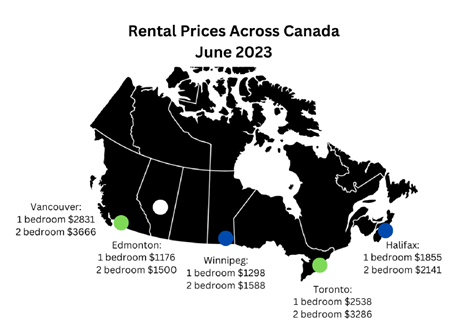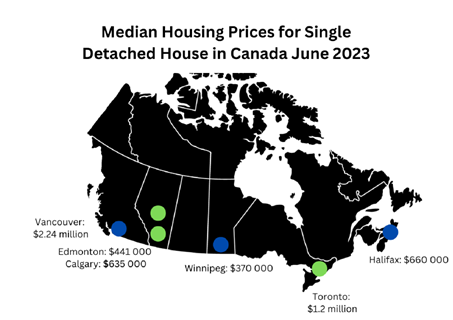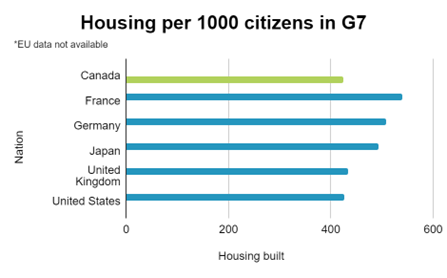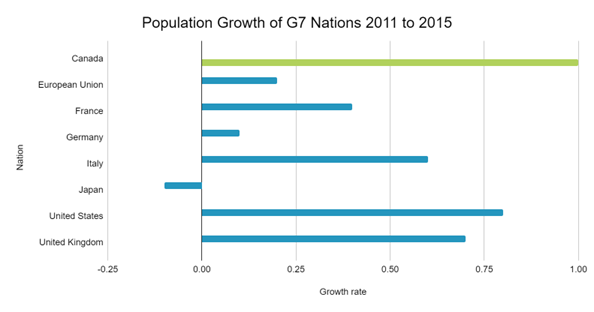[et_pb_section fb_built=”1″ _builder_version=”4.16″ custom_margin=”0px||0px||false|false” custom_padding=”0px||0px||false|false” global_colors_info=”{}”][et_pb_row column_structure=”3_4,1_4″ use_custom_gutter=”on” _builder_version=”4.16″ _module_preset=”default” width=”100%” custom_margin=”0px||||false|false” custom_padding=”0px||0px||false|false” border_width_bottom=”1px” border_color_bottom=”#a6c942″ global_colors_info=”{}”][et_pb_column type=”3_4″ _builder_version=”4.16″ _module_preset=”default” global_colors_info=”{}”][et_pb_post_title meta=”off” featured_image=”off” _builder_version=”4.16″ _module_preset=”default” title_font=”||||||||” custom_margin=”||3px|||” border_color_bottom=”#a6c942″ global_colors_info=”{}”][/et_pb_post_title][/et_pb_column][et_pb_column type=”1_4″ _builder_version=”4.16″ _module_preset=”default” global_colors_info=”{}”][et_pb_image src=”https://edmontonsocialplanning.ca/wp-content/uploads/2020/12/COLOUR-BLOCKS_spaced-300×51.png” title_text=”COLOUR BLOCKS_spaced” align=”center” _builder_version=”4.7.7″ _module_preset=”default” max_width=”100%” max_height=”75px” custom_margin=”0px|0px|0px|0px|false|false” custom_padding=”10px|0px|20px|0px|false|false” global_module=”96648″ global_colors_info=”{}”][/et_pb_image][/et_pb_column][/et_pb_row][et_pb_row column_structure=”3_4,1_4″ use_custom_gutter=”on” make_equal=”on” _builder_version=”4.16″ background_size=”initial” background_position=”top_left” background_repeat=”repeat” width=”100%” custom_margin=”0px|auto|0px|auto|false|false” custom_padding=”30px|0px|0px|0px|false|false” global_colors_info=”{}”][et_pb_column type=”3_4″ _builder_version=”4.16″ custom_padding=”0px|0px|0px|0px|false|false” global_colors_info=”{}” custom_padding__hover=”|||”][et_pb_text _builder_version=”4.16″ _dynamic_attributes=”content” _module_preset=”default” text_font=”|600|||||||” text_text_color=”#2b303a” custom_padding=”||32px|||” global_colors_info=”{}”]@ET-DC@eyJkeW5hbWljIjp0cnVlLCJjb250ZW50IjoicG9zdF9kYXRlIiwic2V0dGluZ3MiOnsiYmVmb3JlIjoiIiwiYWZ0ZXIiOiIiLCJkYXRlX2Zvcm1hdCI6ImRlZmF1bHQiLCJjdXN0b21fZGF0ZV9mb3JtYXQiOiIifX0=@[/et_pb_text][et_pb_text _builder_version=”4.18.0″ text_text_color=”#2b303a” text_line_height=”1.6em” header_2_font=”||||||||” header_2_text_color=”#008ac1″ header_2_font_size=”24px” background_size=”initial” background_position=”top_left” background_repeat=”repeat” text_orientation=”justified” width=”100%” module_alignment=”left” custom_margin=”0px|0px|0px|0px|false|false” custom_padding=”25px||||false|false” hover_enabled=”0″ locked=”off” global_colors_info=”{}” sticky_enabled=”0″]
Is gentrification the answer to Edmonton’s affordable housing crisis? This article looks at the city’s complicated relationship with gentrification and how the attempt to revitalize of certain neighbourhoods has affected the residents.
By Jayme Wong, ESPC Volunteer
“Gentrification” is the process of a lower-income, urban area becoming a hub for new businesses and housing, thereby increasing the economic and social makeup of the neighbourhood. The process is usually measured “through changes in neighbourhood features, in housing, and in the composition of the residents over a period of time.” [1] However, with these changes come more displaced people and increases in housing prices during a time when people are already financially struggling [2].
While gentrification can bring business and life into previously struggling areas, it can also be disruptive and harmful to the pre-existing community ecosystems. In this critical look at housing gentrification, we will be looking at Edmonton’s contentious history of gentrification, including the revitalization of the Ice District and the commissioning of the multi-million-dollar Rogers Place, and the path to affordable living moving forward.
Located in the heart of the city, Rogers Place is a gleaming, Ice District palace whose expansive and impressive walls contain a questionable history. The $613.7 million structure [3], which was officially opened in September 2016, has divided public opinion since the City of Edmonton bought the land and entered into a series of agreements with Edmonton Arena Corporation in 2013. Though the area was developed with the promise of community benefits – such as the “provision for development/facilitation of training or employment for low-income/high-need Edmontonians” [3] – some have instead viewed Rogers Place as another example in a long line of land dispossession [4]. Many consider Rogers Place as a prime example of gentrification, which has caused ripple effects in the Edmonton housing market and contributed to further housing gentrification throughout the city.
Local government seems to be in a constant balancing act between wanting to attract people to the city and finding enough places for them to live. As Omar Mosleh writes in his Toronto Star article, “While the Oilers’ purchase of the Boyle Street property is good news for the charitable organization, it also illustrates a city being pulled between two realities – the gentrification of the Ice District and the continued displacement of a homeless community that is more than half Indigenous and highly concentrated in the same neighbourhood.” [5] Mosleh’s comment also touches on the racialized intersection of gentrification, which has a history rooted in colonialism and the seizure of Indigenous lands by white European settlers.
Regardless of the City’s original intentions behind building Rogers Place, their decision has become a “race issue.” In 2016, 5.39% of Edmonton’s population identified as Indigenous, making Edmonton home to one of the largest Indigenous populations in Canada [6,7]. However, despite making up a relatively small part of Edmonton’s general population, 51% of individuals surveyed in Edmonton’s 2016 Homeless Count* identified as Indigenous. [8] With so many people and nowhere to go, downtown is a natural choice for people to gravitate towards because of its proximity to social services like homeless shelters, meal provision, safe consumption sites, and other community hubs. The construction of Rogers Place right in the middle of a central area for Edmonton’s homeless has created fear, distrust, and hostility for its mostly Indigenous population. As Jeremiah Basuric, a community engagement worker at the Mustard Seed, noted back in 2016, “When you build such a big structure, the economics of the place, (and) the psychological effects of that, cast this vision that you don’t belong here anymore.” [9] Though Indigenous peoples have rarely felt welcomed in Canadian cities, Rogers Place is another physical reminder that their ancestral lands have been taken and commodified. The grand building stands in stark contrast to the homeless encampments that often appear around that area of the city.
Rogers Place is just one example of the City of Edmonton attempting to draw more people into the city. Developed in 2020, Edmonton’s City Plan anticipates the city’s population to grow to two million. To solve the inevitable housing issue this population increase will entail, the City has invested a considerable amount into infill development [10]. According to Infill Edmonton, “Infill is the process of developing vacant or under-used land within existing urban areas that are already developed.” [11] According to the website, infill’s benefits include housing for all, financial sustainability, keeping neighbourhoods alive, multigenerational living, environmental sustainability, and health. [12] Despite this attempt to increase affordable and available housing, 2,745 people experienced homelessness in August 2022 [13], and emergency shelters are only a temporary solution.
So, for whom is gentrification benefiting?
The answer will likely never be definitive. However, it is clear that Edmonton’s gentrification projects have not been for the benefit of its homeless population. Instead, gentrification has welcomed an influx of richer residents and visitors to new areas while further marginalizing other areas. Rather than having social services widely available, they are instead pushed to certain areas of the city. For example, Edmonton’s Chinatown residents have been complaining for years about the centralization of social services so close to their businesses. [14] The City’s “out of sight, out of mind” seems to prioritize developing some neighbourhoods while ignoring others.
Though Rogers Place stands tall, its long shadow does not fully obscure the city’s larger problem: its growing unhoused population. Perhaps it is time for our city counselors to take a step back and realize that gentrification is creating as many problems as it appears to be solving. The future of affordable housing development in Edmonton remains unclear, though it is now more important than ever that we do not fall into our old settler-colonialist patterns by ignoring those who first inhabited the land.
*Homeward Trust completed a Point in Time Homeless count on September 28, 2022. At the time of this publication the numbers were not yet ready.
Did You Enjoy this Blog? Please provide us feedback here
Jayme is a volunteer with Edmonton Social Planning Council and has a BA in English and Philosophy from the University of Lethbridge and an MA in English and Film Studies from the University of Alberta. She currently lives in Edmonton with her partner and their cat.
Sources:
[1] Firth, C.L., Thierry, B., Fuller, D., Winters, M. & Kestens Y. (2021) Gentrification, Urban Interventions and Equity (GENUINE): A map-based gentrification tool for Canadian metropolitan areas. Health Reports, 32(5), 15-28. https://www.doi.org/10.25318/82-003-x202100500002-eng
[2] Panza-Beltrandi, G. (2022, September 22). Young Albertans feeling the pinch of grocery prices continue to rise. CBC. https://www.cbc.ca/news/canada/edmonton/young-albertans-feeling-the-pinch-as-grocery-prices-continue-to-rise-1.6590914
[3] Building Rogers Place: The Agreement. (n.d.) City of Edmonton. https://www.edmonton.ca/attractions_events/rogers_place/the-agreement
[4] Scherer, J., Kafara R., & Davidson J. (2022). A few weeks in a dirty city: sport-related gentrification, mobilizing resistance, and the art of failure in Edmonton, Alberta. Journal of Sport and Social Issues, 0(0). https://doi.org/10.1177/01937235221094063
[5] Mosleh, O. (2022, February 24). In the shadow of an arena: How one hockey-loving, oil-rich Canadian city is again displacing Indigenous people. Toronto Star. https://www.thestar.com/news/canada/2022/02/24/in-the-shadow-of-an-arena-how-gleaming-developments-are-looming-over-indigenous-people-in-this-oil-soaked-city-again.html
[6] Edmonton – % Aboriginal Population. (2022, February 6). Government of Alberta. https://regionaldashboard.alberta.ca/region/edmonton/percent-aboriginal-population/#/
[7] Statistical Profile of Indigenous Peoples Living in Edmonton. (n.d.) City of Edmonton, Indigenous Relations Office. https://www.edmonton.ca/city_government/indigenous-relations-office#:~:text=Edmonton%20and%20surrounding%20area%20has,or%205%25%20of%20the%20population.
[8] Current State of Homelessness in Edmonton. (n.d.) End Homelessness YEG. http://endhomelessnessyeg.ca/current-state-homelessness-edmonton/
[9] French, J. (2016, January 31). Future for Edmonton’s homeless in Ice District unclear. Edmonton Sun. https://edmontonsun.com/2016/01/31/future-for-edmontons-homeless-in-ice-district-unclear
[10] Boothby, L. (2022, May 4). Affordability needs to be built into Edmonton’s plan to boost density with infill development: expert. Edmonton Journal. https://edmontonjournal.com/news/local-news/affordability-edmonton-density-infill-expert
[11] Infill Edmonton. (n.d.) Retrieved from https://www.infilledmonton.com
[12] So, What are some of the Benefits of Infill? (n.d.). Infill Edmonton. https://www.infilledmonton.com/benefits-to-infill
[13] Archer, M. (2022, September 27). Edmonton homeless population count set for Wednesday, history shows need for winter shelter space. Global News. https://globalnews.ca/news/9160650/edmonton-homeless-population-count-winter-plan/
[14] Baig, F. (2022, June 18). Edmonton’s Chinatown worries about safety, decline in business after killings. CBC. https://www.cbc.ca/news/canada/edmonton/edmonton-chinatown-business-killings-1.6493633
[/et_pb_text][dmpro_button_grid _builder_version=”4.18.0″ _module_preset=”default” global_colors_info=”{}”][/dmpro_button_grid][dmpro_image_hotspot _builder_version=”4.17.4″ _module_preset=”default” global_colors_info=”{}”][/dmpro_image_hotspot][/et_pb_column][et_pb_column type=”1_4″ _builder_version=”4.16″ custom_padding=”0px|20px|0px|20px|false|false” border_color_left=”#a6c942″ global_colors_info=”{}” custom_padding__hover=”|||”][et_pb_testimonial author=”Posted by:” job_title=”@ET-DC@eyJkeW5hbWljIjp0cnVlLCJjb250ZW50IjoicG9zdF9hdXRob3IiLCJzZXR0aW5ncyI6eyJiZWZvcmUiOiIiLCJhZnRlciI6IiIsIm5hbWVfZm9ybWF0IjoiZGlzcGxheV9uYW1lIiwibGluayI6Im9uIiwibGlua19kZXN0aW5hdGlvbiI6ImF1dGhvcl93ZWJzaXRlIn19@” portrait_url=”@ET-DC@eyJkeW5hbWljIjp0cnVlLCJjb250ZW50IjoicG9zdF9hdXRob3JfcHJvZmlsZV9waWN0dXJlIiwic2V0dGluZ3MiOnt9fQ==@” quote_icon=”off” portrait_width=”125px” portrait_height=”125px” disabled_on=”on|off|off” _builder_version=”4.16″ _dynamic_attributes=”job_title,portrait_url” _module_preset=”default” body_text_color=”#000000″ author_font=”||||||||” author_text_align=”center” author_text_color=”#008ac1″ position_font=”||||||||” position_text_color=”#000000″ company_text_color=”#000000″ background_color=”#ffffff” text_orientation=”center” module_alignment=”center” custom_margin=”0px|0px|4px|0px|false|false” custom_padding=”32px|0px|0px|0px|false|false” global_colors_info=”{}”][/et_pb_testimonial][et_pb_text disabled_on=”on|off|off” _builder_version=”4.16″ _dynamic_attributes=”content” _module_preset=”default” text_text_color=”#000000″ header_text_align=”left” header_text_color=”rgba(0,0,0,0.65)” header_font_size=”20px” text_orientation=”center” custom_margin=”||50px|||” custom_padding=”48px|||||” global_colors_info=”{}”]@ET-DC@eyJkeW5hbWljIjp0cnVlLCJjb250ZW50IjoicG9zdF9jYXRlZ29yaWVzIiwic2V0dGluZ3MiOnsiYmVmb3JlIjoiUmVsYXRlZCBjYXRlZ29yaWVzOiAgIiwiYWZ0ZXIiOiIiLCJsaW5rX3RvX3Rlcm1fcGFnZSI6Im9uIiwic2VwYXJhdG9yIjoiIHwgIiwiY2F0ZWdvcnlfdHlwZSI6ImNhdGVnb3J5In19@[/et_pb_text][et_pb_audio audio=”https://edmontonsocialplanning.ca/wp-content/uploads/2022/10/2022_10_18_A_Critical_Look_at_Edmontons_Gentrification_Problem.mp3″ title=”Listen to the Article” album_name=”Audio Recording” _builder_version=”4.18.0″ _module_preset=”default” global_colors_info=”{}”][/et_pb_audio][et_pb_button button_url=”https://edmontonsocialplanning.ca/wp-content/uploads/2022/10/2022_10_18_A_Critical_Look_at_Edmontons_Gentrification_Problem.mp3″ url_new_window=”on” button_text=”Download the Audio Recording Here” _builder_version=”4.18.0″ _module_preset=”default” custom_button=”on” button_text_color=”#FFFFFF” button_bg_color=”#A6C942″ button_border_color=”#A6C942″ global_colors_info=”{}”][/et_pb_button][/et_pb_column][/et_pb_row][/et_pb_section]



